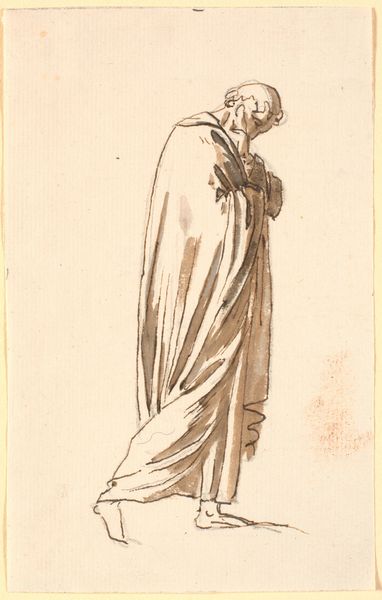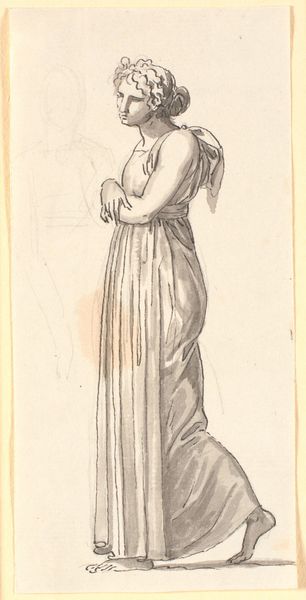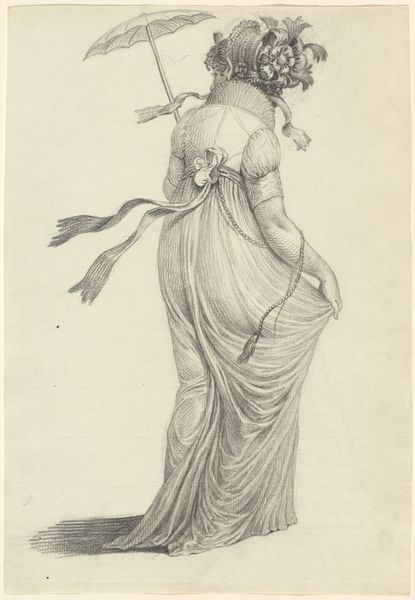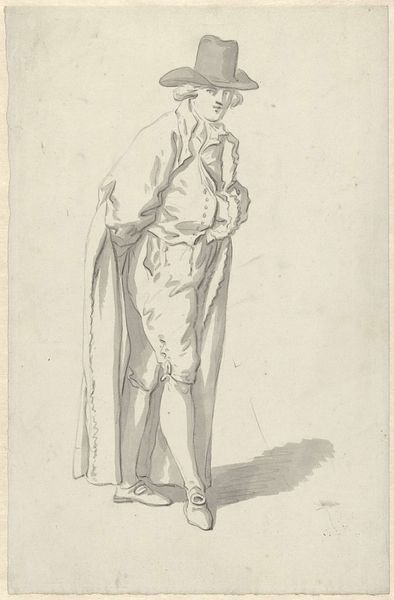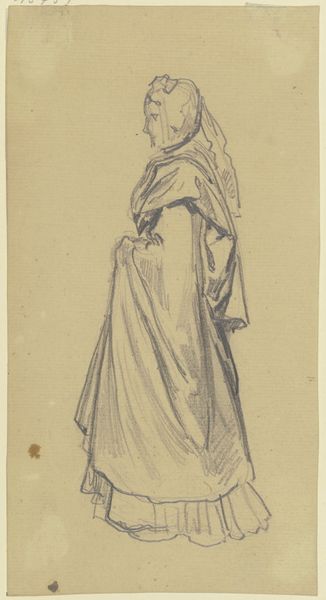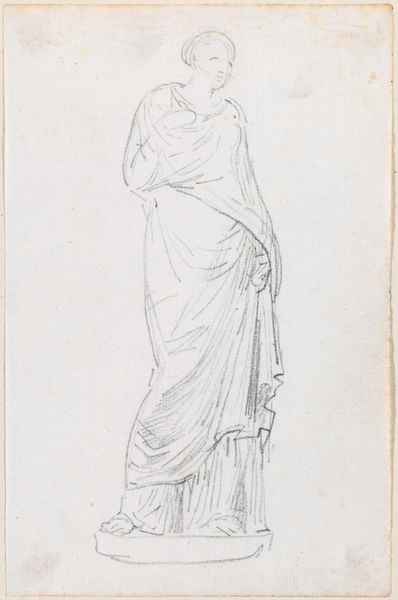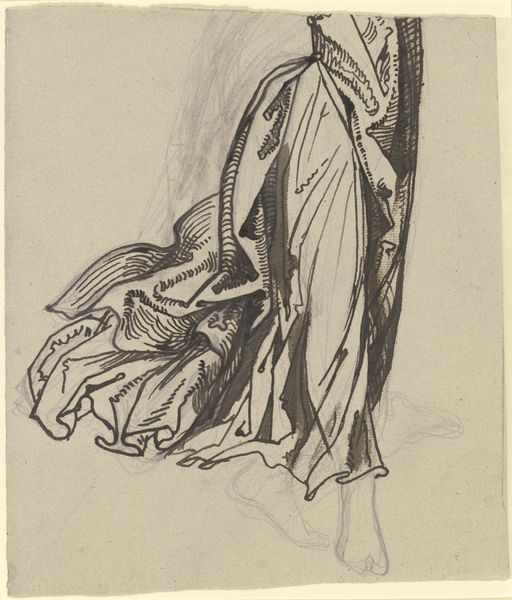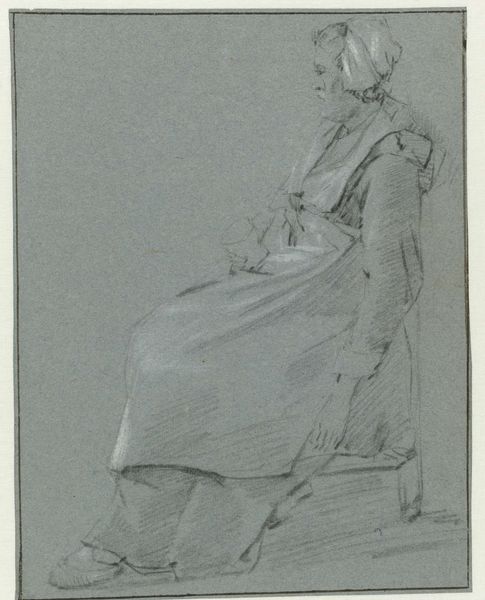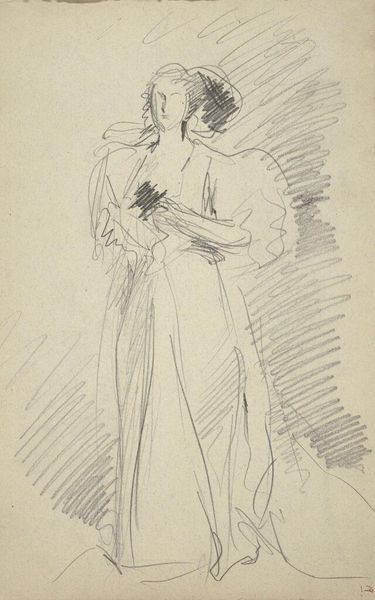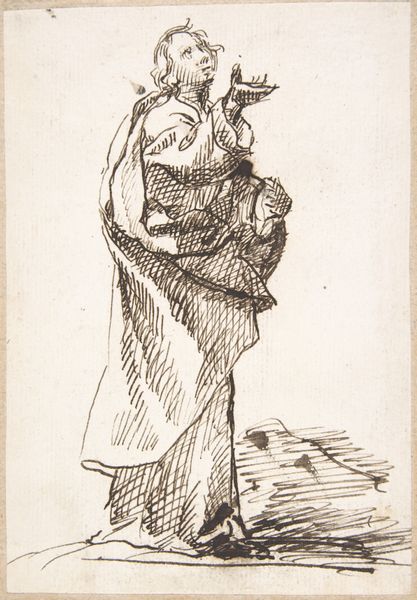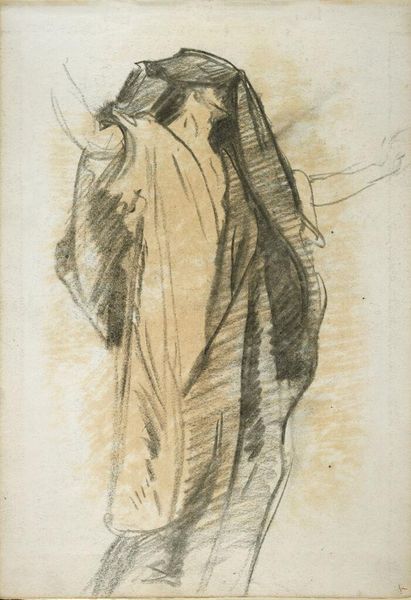
drawing, ink, pencil
#
portrait
#
pencil drawn
#
drawing
#
pencil sketch
#
charcoal drawing
#
figuration
#
ink
#
pencil drawing
#
pencil
#
portrait drawing
#
genre-painting
#
realism
Dimensions: height 320 mm, width 184 mm
Copyright: Rijks Museum: Open Domain
Curator: Before us is Alexander Ver Huell's drawing, "Man die een laken om zich heen slaat," dating from somewhere between 1854 and 1887. The work currently resides in the Rijksmuseum collection. Editor: My first impression is the incredible sense of vulnerability. The figure's wrapped, but not necessarily protected. There's a real raw, exposed feeling, like he's both hiding and presenting himself. Curator: Exactly. Let's delve into the materiality of the drawing itself. We see the clear marks of the artist's hand – the pencil strokes, the layering of ink washes. It speaks to the labor involved. How do the visible marks of production shape our reading? Editor: Well, consider the choice of materials. Pencil and ink aren't inherently precious or luxurious. This resonates with me when considering that Ver Huell might have used readily available materials for study and experimentation in the everyday, moving the drawing from high art towards a more tangible representation of working practices. This accessibility changes how we perceive artistic skill and the labor of creation. Curator: Absolutely. Moreover, let’s consider this image in a historical context of 19th century and evolving social standards. Does the man's posture - with crossed arms in the wrapping sheet - reflect an attempt to reclaim agency within socially restricted parameters? Are we looking at defiance or resignation? What kind of identity politics can we read into his face? Editor: Interesting, and it shifts us toward the performative nature of presentation. The figure’s attire–or lack thereof–signals, maybe intentionally, a negotiation with display. Considering clothing and covering as modes of communication within a culture, do you believe Ver Huell intended to challenge perceptions through what is both revealed and concealed? The drawing plays on this relationship to great effect. Curator: Precisely, it confronts us. There’s no gilded frame or elaborate setting. The medium, the subject - it all pushes toward this essential question of identity in transformation. It’s a glimpse of real people in all their states of exposure during this time. Editor: The texture is evocative. Looking at the rendering of cloth, the artist gives weight and presence to ordinary materials. How fascinating that something so basic can hold a world of meaning! The artist directs us to ponder and appreciate these elements of the material. Curator: Agreed. The confluence of artistic intent and societal contexts produces a dialogue between material representation and the sociopolitical reality, encouraging continuous analysis on our part. Editor: This exploration helps remind us how crucial the artist’s hand and medium are, bringing attention back to the act of creation as fundamental to how meaning comes together.
Comments
No comments
Be the first to comment and join the conversation on the ultimate creative platform.
